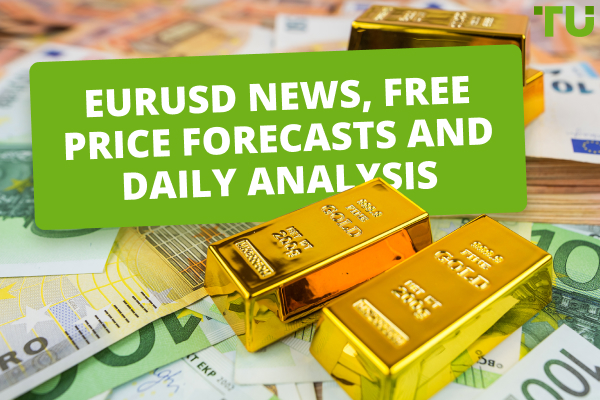Forex correlations
Traders use different kinds of analysis to improve their trading results in the Forex market. The most common ones are technical and fundamental analysis. Professional traders also use correlations of currencies and/or other assets, which allows them to both increase profits and hedge open position risks. In this article, Traders Union explains the notion of correlation, its types, correlating currencies, and the ways to use correlation.
What is a currency pair correlation?
Correlation is the interconnection between two different currency pairs where they move either in the same direction, which is called a positive correlation, or in opposite directions, which makes it a negative correlation.
Essentially, a correlation is when one asset repeats the movement of another, i.e., when they are able to move synchronously in the same direction. Correlation is possible between different instruments, such as currency pairs, stock indices, commodities, etc. Currencies may follow indices, commodities, and/or other currencies. For example, if a country’s economy depends on the oil market, the price of its national currency may also depend on oil futures performance, i.e., if oil prices rise, this country’s currency rate rises as well, and vice versa, if oil prices drop, the currency rate declines.
What is a correlation coefficient?
Traders use the Pearson correlation coefficient, also commonly known as the correlation coefficient, to determine the degree of correlation, using the following formula.
The correlation coefficient represents the ratio between the covariance of two variables – in this case, the prices of assets X and Y – and the product of their standard deviations. Naturally, all calculations are now performed by corresponding programs.
Values below -0.70 and above +0.70 are deemed strong, and values between -0.70 and +0.70 are deemed weak, i.e., instruments with correlation in the negative range starting from -0.70, move in relatively the same manner but different directions, and instruments with correlation in the positive range starting from +0.70, move in tandem.
What are the benefits of knowing currency pair correlations?
Instrument correlation may be used to predict the movement of an instrument, which is led by another instrument. For instance, if the leading currency goes up, you can open a long position for the led instrument, or if the leading instrument reverses, you can close the existing position. The same principle goes for negative correlation but vice versa. Correlation is also used to limit losses from an open position by opening an opposite trade for the led currency or by opening a trade in the same direction if these instruments have a negative correlation. This is called hedging.
Forex currency pairs with the highest correlation
Examples of direct correlation include such currency pairs as EUR/USD and GBP/USD or AUD/USD and NZD/USD, and all of these pairs are directly influenced by the USD price performance and cross rates of EUR/AUD and EUR/NZD, where the movement of AUD or NZD is more significant. A perfect example of reverse correlation is EUR/USD and USD/CHF.
| EUR/USD | GBP/USD | USD/CHF | USD/JPY | EUR/JPY | USD/CAD | AUD/USD | |
|---|---|---|---|---|---|---|---|
EUR/USD |
1 |
0.81 |
- 0.54 |
0.51 |
0.87 |
- 0.72 |
0.79 |
GBP/USD |
0.81 |
1 |
- 0.35 |
0.83 |
0.94 |
- 0.56 |
0.76 |
USD/CHF |
- 0.54 |
- 0.35 |
1 |
- 0.08 |
- 0.32 |
0.37 |
- 0.48 |
USD/JPY |
0.51 |
0.83 |
- 0.08 |
1 |
0.86 |
- 0.52 |
0.64 |
EUR/JPY |
0.87 |
0.94 |
- 0.32 |
0.86 |
1 |
- 0.71 |
0.82 |
USD/CAD |
- 0.72 |
- 0.56 |
0.37 |
- 0.52 |
- 0.71 |
1 |
- 0.67 |
AUD/USD |
0.79 |
0.76 |
- 0.48 |
0.64 |
0.82 |
- 0.67 |
1 |
Correlation of currencies and commodities
Traditionally, the most prominent correlation of currencies and commodities is the correlation of USD/CAD and oil. Canada is the seventh largest producer of oil in the world, and this country’s economy strongly depends on oil export. That’s why an increase in oil prices has a positive effect on the CAD price performance, causing the USD/CAD exchange rate to go down. A decrease in oil prices has a negative effect, and the USD/CAD exchange rate goes up.
Prices of copper and gold have usually been a good indicator of potential movements in the AUD/USD pair. Mining industry, particularly copper and gold mining, plays an important role in Australia’s economy. That’s why a rise in the prices of these metals may promote an increase in the AUD/USD rate, and a price drop may cause the rate to decline.
JPY and gold prices can also move in the same direction because both of these assets traditionally serve as the so-called safe-haven assets that are in demand during economic crises or sales in capital markets.
Correlation of currencies to stocks and other assets
To determine potential movements in the USD/JPY pair, experienced traders use the dynamics of the U.S. stock indices, especially S&P500. As we mentioned before,, a drop in indices occurs when investors refuse risky assets and promote purchases of JPY. And vice versa, when speculators are determined to risk, they get rid of JPY and buy USD. Thus, an index drop may precede the USD/JPY rate drop, and an index rise may precede the USD/JPY rate rise. In this case, S&P500 is the leading asset, and USD/JPY is the led asset.
USD rates may be influenced by the rates of the U.S. long-term bonds. Yield growth and a decline in bond quotations support the U.S. dollar, and yield decline and a higher demand for bonds put pressure on the USD. Here, the USD acts as a safe-haven asset.
How to trade correlated currency pairs
There are no particular strategies for trading correlated currencies. If a trader has an open short position for EUR/USD, he can reduce the risk by opening a short position for USD/CHF. In this case, profits from selling USD/CHF may compensate for possible losses from selling EUR/USD, and vice versa.
Selling AUD/USD may be hedged by buying NZD/USD, buying EUR/USD may be hedged by selling GBP/USD, and selling EUR/AUD may be hedged by buying EUR/NZD. In these and other cases, you should always consider potential movements in cross rates of currencies. For instance, the effect of hedging the buy of EUR/USD with the sell of GBP/USD may be canceled out at best or bring losses at worst if the EUR/GBP cross rate declines actively. Thus, GBP/USD will rise, and EUR/USD will either be flat or go down, which will cause a very bad situation for a trader.
Summary
Market correlation, and specifically intermarket analysis, may well be used in trading to increase profits and hedge positions. Both are generally interconnected. However, in recent years, there have been breaches of correlations between some market instruments, so traders should approach this kind of analysis with caution and see how well traditional correlations between instruments have been maintained.
It is also necessary to consider possible movements in cross rates that may have a negative effect on a trader’s attempt to hedge an open position or open a position for the led instrument based on the movement of the leading instrument.
FAQ
What is a correlation and what are the types of correlations?
A correlation is the interconnection between two different currency pairs where they move either in the same direction, which is called a positive correlation, or in opposite directions, which makes it a negative correlation.
How can I benefit from knowing currency correlation?
Currency correlation can be used to both open new positions and hedge the existing ones.
What currencies have the highest correlation?
EUR/USD and GBP/USD, AUD/USD and NZD/USD, and EUR/USD and USD/CHF.
Can currencies correlate with commodities?
Yes, they can. For instance, USD/CAD correlates with oil quotations.
Team that worked on the article
Oleg Tkachenko is an economic analyst and risk manager having more than 14 years of experience in working with systemically important banks, investment companies, and analytical platforms. He has been a Traders Union analyst since 2018. His primary specialties are analysis and prediction of price tendencies in the Forex, stock, commodity, and cryptocurrency markets, as well as the development of trading strategies and individual risk management systems. He also analyzes nonstandard investing markets and studies trading psychology.
Olga Shendetskaya has been a part of the Traders Union team as an author, editor and proofreader since 2017. Since 2020, Shendetskaya has been the assistant chief editor of the website of Traders Union, an international association of traders. She has over 10 years of experience of working with economic and financial texts. In the period of 2017-2020, Olga has worked as a journalist and editor of laftNews news agency, economic and financial news sections. At the moment, Olga is a part of the team of top industry experts involved in creation of educational articles in finance and investment, overseeing their writing and publication on the Traders Union website.
Olga has extensive experience in writing and editing articles about the specifics of working in the Forex market, cryptocurrency market, stock exchanges and also in the segment of financial investment in general. This level of expertise allows Olga to create unique and comprehensive articles, describing complex investment mechanisms in a simple and accessible way for traders of any level.
Olga’s motto: Do well and you’ll be well!








